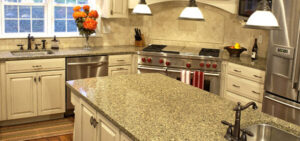Last updated on September 27, 2019
With health and fitness being a major concern these days, adding a home air filtration system to your house construction plans is becoming the industry standard. According to the EPA, the most effective way to reduce pollution within a home is by ventilating with clean air from the outdoors, and implementing a whole-home air filtration system is even better.
What Causes Poor Home Air Quality?
Did you know that according to the EPA, some of the same pollutants that cause itchy eyes, sore throats or headaches and nausea exist in your home at a rate 10 times higher than outside?
Some common home contaminants include:
- Poor ventilation that can lead to dust build-up
- Too much humidity can cause mold to form
- Not enough humidity causes dry air
- Disinfectants
- VOCs include formaldehyde, gasoline, pesticides, etc.
- Tobacco smoke
- Combustion products: by-products of your gas-fueled appliances like the furnace, water, or stove
- Radon
- Asbestos
- Carbon monoxide
How Do Air Filtration Systems Work?
An air filtration system uses a system of internal fans that pull air throughout the home through a series of filters; they remove harmful airborne particles.The first step involves the use of a pre-filter, which captures the larger particles, such as hair and dust. After this, the HEPA filter captures smaller particles, such as allergens and mold. Lastly, the carbon filter captures chemicals, odors, and smoke.
Pollutants that can affect air quality in a home:
- Particulate matter: Includes dust, smoke, pollen, animal dander, tobacco smoke, and particles associated with tiny organisms such as dust mites, mold, bacteria and viruses.
- Gaseous pollutants: come from combustion processes (gas cooking stoves, vehicle exhaust, tobacco smoke). Also come from building materials, furnishings, and the use of adhesives, paints, varnishes, cleaning products, and pesticides.
A whole-home air filtration systemwill capture unwanted pollutants in the air and stop them from circulating through your home. With an air filtration system implanted in your home, you will breath easier with better air quality.
What Other Steps You Can Take to Improve Your Home’s Air Quality
Although the work of Hans Selye shows that bringing in plants can help purify a home, there are other steps you can take to ensure your breathing clean air.You can help maintain better indoor home air quality (even with an air filtration system) by doing the following:
- Vacuum and dust on a regular basis
- Monitor carbon monoxide and radon levels with detectors
- Change and wash bedding frequently
- Limit where your pets go in your home (keep them out of the bedroom, etc.)
- Keep your furnace, air conditioner, etc. well maintained and keep the humidity between 30-60%
- Use non-toxic paints, cleaning supplies, etc.
- Do not smoke inside your home
- Use exhaust fans in the kitchen and bathroom
- Avoid using scented products
When building a home, it is vital to your clients that you implement a home air filtration system. These air filtration systems will help your clients breathe easier by providing better air quality in their homes.


















Be First to Comment